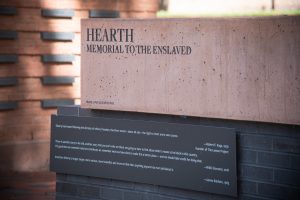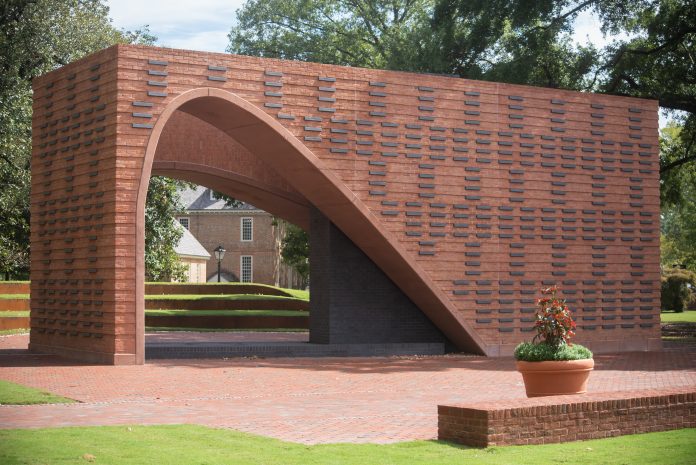Terry Meyers is Chancellor Professor of English, Emeritus at the College of William and Mary. Several decades ago, he became interested in the College’s complicity with slavery and Jim Crow when he found in faculty records a mention of Adam and Fanny, two children enslaved by the College. He realized then that the College had a history mostly forgotten and suppressed, a history he felt needed exploration. Contact him at tlmeye@wm.edu.
The College of William and Mary was the second university in the U.S. after Brown University to establish a funded, institutional examination of its dark history of complicity with slavery and Jim Crow segregation. After resolutions from the Student Assembly and Faculty Assembly, the Board of Visitors in 2009 established the Lemon Project: A Journey of Reconciliation, named after Lemon, a man enslaved by the College.
As defined on its website, the mission of The Lemon Project is broad. Besides performing a scholarly investigation of an ignored and suppressed history, it seeks to build bridges with the local Black community and make the College a safer, comfortable and productive place for students of color.
The Lemon Project determined that an important aspect of making a forgotten past visible was to establish a memorial to those the College enslaved over for 172 years from 1693 to 1865. That memorial was to include the names of the enslaved and be located where they worked in bondage on the historic campus.
An open international competition for a design for the memorial was established, and was won by Will Sendor ’11. His design, “Hearth: Memorial to the Enslaved,” was dedicated on May 7, 2022, and includes around 182 “sightings” of the men, women and children the College enslaved.
As used by Director of the Lemon Project Jody Allen and Associate Director of the Lemon Project Sarah Thomas, the local term “sightings” refers to mentions of the enslaved in the College’s records who are unnamed, such as “paid Mr. Allen hire of a Negro.” As this term points to, though we know the names of some enslaved individuals, most are recorded as “unknown person” or by their kinship or job. While the records are currently incomplete, more sightings are continually coming to light and providing a fuller picture of the enslaved individuals that inhabited the College.
The Hearth reminds us that the history of slavery at the College is sometimes complicated, a sentiment evoked symbolically in “Hearth” itself.

The very word “hearth” carries overwhelmingly positive connotations and evokes a place of community, gathering and strength. These very attributes helped individuals enslaved by the College bear the burden of chattel slavery. Additionally, the Hearth functions as a site on campus where we as a community can gather to contemplate the injustices of the past and their long shadow and find the strength to work towards a more perfect union.
However, we need to also focus on the harsher associations of the College’s actual hearths as sites of hard, forced labor. Under harsh conditions, enslaved men labored summer and winter to provide the enormous amount of firewood our many fireplaces required. Women and children were forced to cook and do laundry over them for white professors and students. The labor of those we enslaved is evoked in Hearth by six handmade bricks recovered from a drain tunnel at the Sir Christopher Wren Building — the bricks and tunnel call back to the forced labor undertaken by those the College enslaved.
The enslaved showed endurance, resilience and resistance, making a way out of no way. Consider Winkfield, a Black man enslaved by the College, remembered as a man of “spirit and candor.” Winkfield asserted his equality with white people. When he was asked by a professor here in the 1770’s why he was Black, if Adam and Eve were white, he replied, “I don’t know: but, prick your hand and prick mine, my blood is as red as yours.”
Furthermore, faculty minutes document the forced labor we required of our enslaved. Consider these entries regarding Joe:
July 31, 1827: “Resolved that Joe the College servant be placed under the Control of Mr Gresham the Steward, and that he be requested to make him cut sufficient pine and oak wood for the use of the College, and keep him employed in and about the College, and the Garden assigned to the President when not engaged in cutting Wood; that the Steward be requested to have the wood cut by Joe when sufficiently seasoned hauled up, for which he shall be paid what is reasonable—and that the Wood be stored away and secured against pillage” (Faculty Minutes Book, 279).
July 6, 1837: “The following orders were passed in respect to repairs of the College Premises, and were to be attended to during the Vacation:
That Joe the College Servant is required to cut four cords of wood weekly during the recess, and that Mr. Pryor the constable be employed to measure such wood and see that this order is fulfilled” (Faculty Minutes Book, 86).
From its start, The College was financed overwhelmingly by slavery. Two of its most generous original benefactors, Micajah Perry and Thomas Lane, made their money from trafficking both tobacco and human beings. The Royal Charter specified that we were to receive “a penny per pound” for every pound of tobacco sold. And, of course, students’ tuition and other costs were paid with proceeds from their families’ plantations — the College itself acquired a tobacco plantation, the Nottoway Quarter, using its proceeds to provide financial aid to the sons of middle-class families.
The nadir of the College’s complicity with slavery was likely in the Antebellum years under the presidency of Thomas Roderick Dew from 1836-1846. Dew was a forcible defender of slavery, perhaps second only to John C. Calhoun, arguing in the cold language of economics and property law that it should not and could not be done away with (a possibility the Virginia legislature took up in 1831 after Nat Turner’s rebellion). He thought Virginia’s enslavers could gather vast wealth by breeding enslaved individuals so that they could sell the offspring further south where the demand was great. Further complicating the politics of space on campus, Dew died in Paris in 1846 but was reinterred in the Wren Crypt in 1939 — not a hundred yards from Hearth. On a quiet night, you can hear him spinning.
However, from about 1760 to the early decades of the 19th century the College held an intellectual unease with slavery. One student, Winfield Scott, commented that in his time, 1805, most students graduated as abolitionists. St. George Tucker, a law professor, incorporated his opposition to slavery in his classes and published in 1796 a proposal for the gradual abolition of slavery. He regarded those he enslaved as members of his extended family — some of whom he sold. Thomas Jefferson was exposed to such skepticism and encouraged it, hoping that the younger generation taught at the College would find a way to do away with slavery. Yet Jefferson, a slave owner himself, expressed no such hopes when he founded the University of Virginia, perhaps because he was seeking state funding. These individuals encapsulate the jarring complexity and contradictions within the history of enslavement at the College that the Hearth calls attention to.
Other graduates from this era included William Short and Edward Coles, both firm abolitionists. Coles freed the enslaved he inherited and, as governor of Illinois, helped stop the introduction of slavery to Illinois.
In 1807, one free Black man, Rozarro, from near Williamsburg thought the College’s climate was enlightened enough that he might be allowed to attend science lectures. He had taught himself reading, writing, arithmetic, plane and solid geometry and the rudiments of Latin. His request was turned down but treated with sympathy by the College’s president, Bishop James Madison.
Apart from Short, perhaps, it is worth recalling that virtually all white people at the time were deeply racist and anticipated no multiracial or multicultural America. The majority of white people believed that freed Black people should be returned to Africa, or at least exiled beyond the boundaries of Virginia, and faculty minutes record periodic abuse of the enslaved.
The Hearth is a place not only of contemplation and recollection of the past, but also of consideration of the present and the future. Recent focus across the country on racial discrimination and oppression has drawn attention to the lingering effects of slavery and segregation. In light of this increased awareness, the Hearth offers an important place and an occasion to meditate on the past, the present and the future.
CORRECTION (9/13): A previous version of this article stated that the date of the dedication of “Hearth: Memorial to the Enslaved” was May 12, 2022. The date has now been updated to May 7, 2022 to reflect the accuracy of the dedication.

